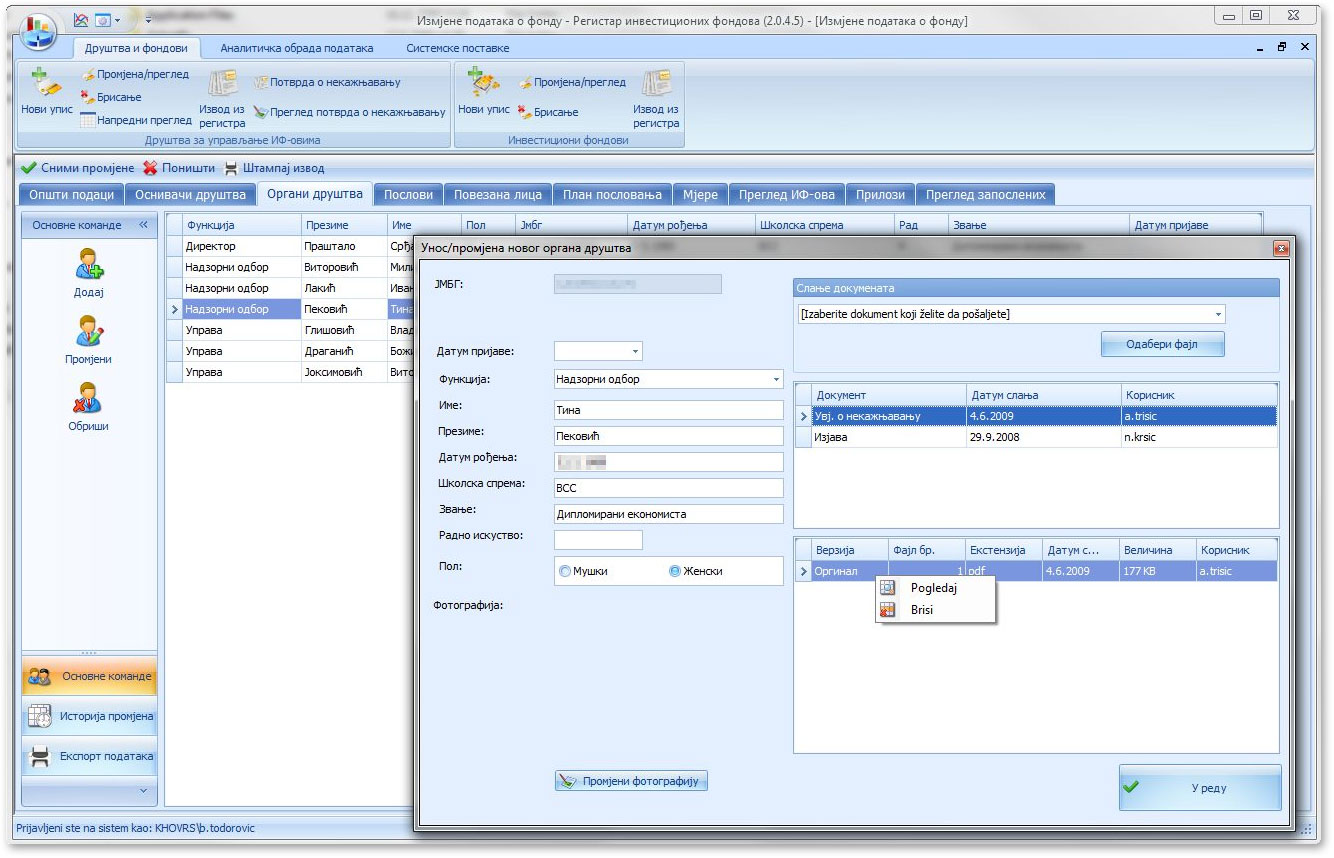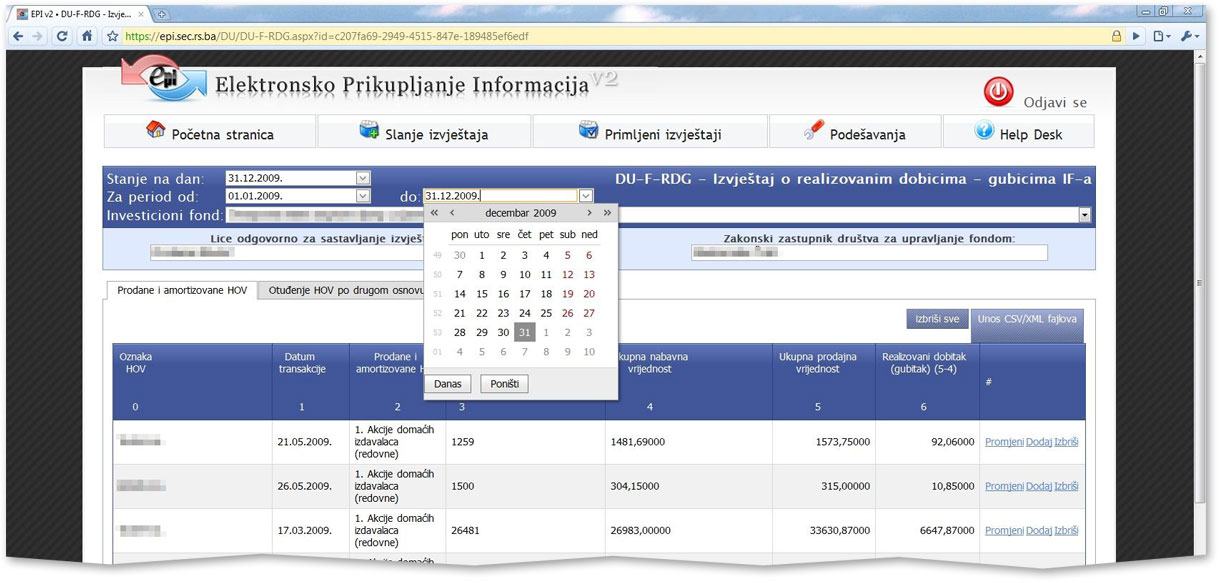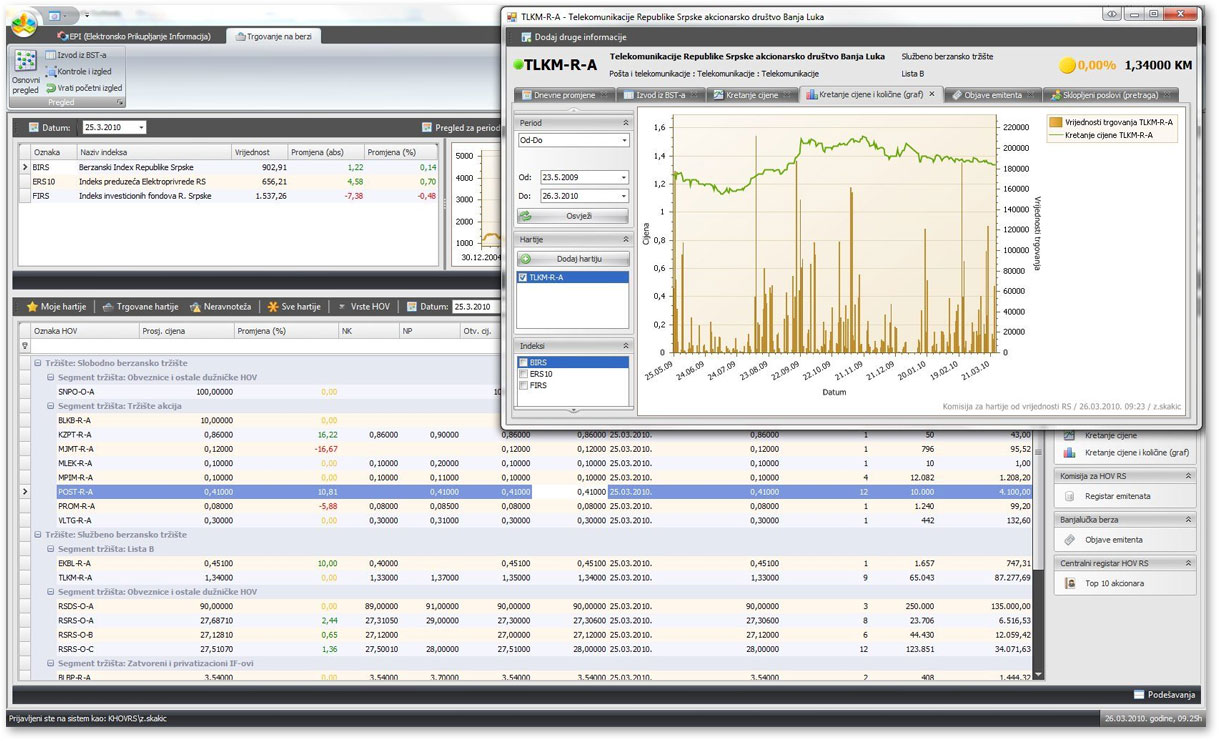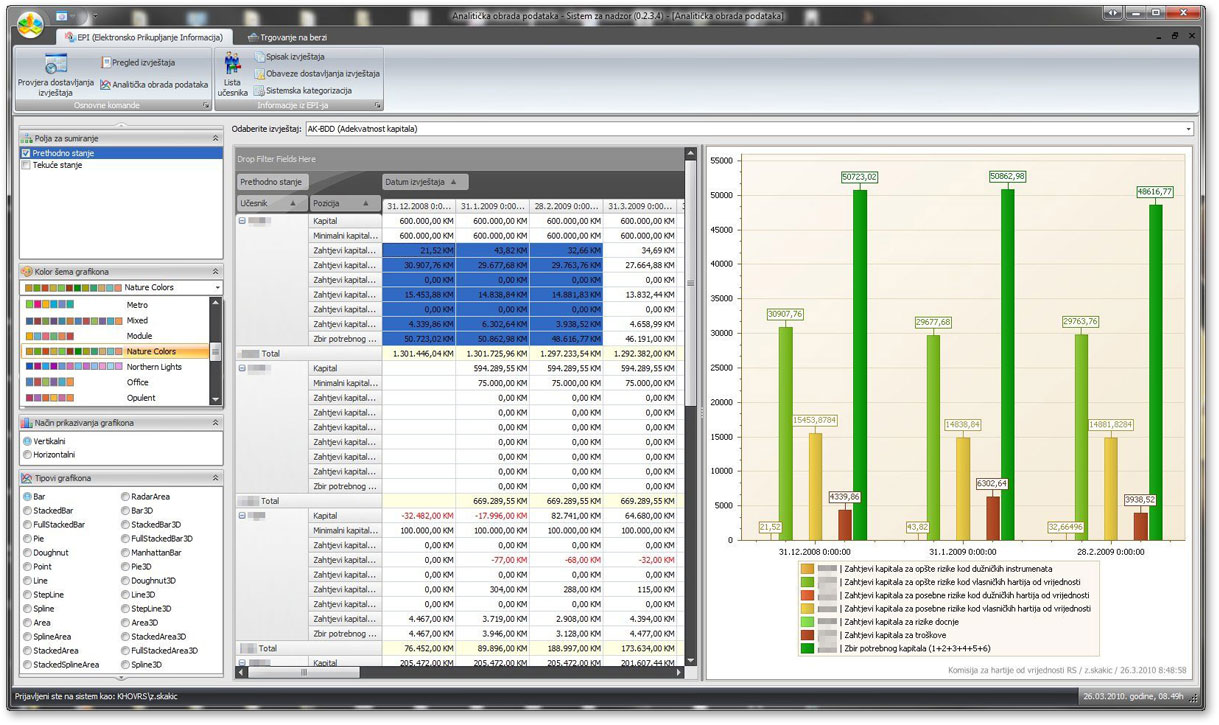Republic of Srpska Securities Commission

Team Details
The Republic of Srpska Securities Commission is the financial services regulatory body of the Republic of Srpska (RS), a political entity within the state of Bosnia and Herzegovina. RS has established its own stock exchange (Banja Luka Stock Exchange) and set some high-level goals for the RS Securities Commission: improve transparency by publishing various data on the Web, gather and exchange data among capital market participants, develop surveillance over stock exchange trades - in order to identify and analyze trends - develop effective and efficient capital market, further develop the country’s economy, and identify any attempts of malicious activities, as identified in the European Union Market Abuse Directives. Since the stock exchange and capital market formation in the early 2000’s, there has been a strong movement towards developing relevant laws and regulations. However, late in 2006 the main focus was shifted towards the development of an integrated information system, which would bring many benefits of ICT to the capital market. The RS Securities Commission formed a development team consisting of a project manager/lead developer, B. Todorović M.Sc., UX/developer/analyst/designer Z. Skakić and developer/analyst G. Vasilić, Professor of Mathematics.
First Challenge: Data Entry Applications
In 2006, the RS Securities Commission started developing the basis of its integrated information system: the registries of listed companies and capital market participants (brokerage houses, banks, investment funds, custody banks, stockbrokers, investment managers and advisors, etc.).
Our team started with Visual Studio .NET 2005, but later changed to the more efficient beta version of Visual Studio .NET 2008 (and later the RTM & SP1). However, the default controls that Visual Studio .NET offered simply didn’t provide enough functionality and we spent great amounts of time trying to “reinvent the wheel” in such areas as GridView auto filtering, error handling and advanced visual representation of tabular data. Since the project time constraints were rather tight we had to come up with another means of making the developing process more efficient.
While evaluating the currently available Visual Studio .NET components we identified DevExpress as one of the best solutions to their challenges. Using attractive DevExpress UI controls to maximize user experience, combined with competitive pricing of the ASP.NET and Enterprise subscriptions, we successfully completed all of the data-entry applications within budget, timeframe and with more user requirements realized than initially planned. Rapid development techniques, made possible by great controls like the GridView (and many featured layouts), advanced TextBoxes, Lists, ComboBoxes, NavBar and the Ribbon, enabled our development team to complete tasks more quickly than ever before, even leaving some time for end-users to evaluate the applications, add suggestions and refine the UI.
The final build quality introduced a modern and functional user interface and experience to end-users, who rated the applications as the best ones they had used in a long time.

Screenshot of a data-entry application, showing entry of new board of director member, for an investment fund management company, listed on Banja Luka Stock Exchange
Second Challenge: Electronic Data Gathering System (aka E.P.I.)
The second challenge arose soon after the initial data-entry applications were published and used by the Commission’s employees. The Commission needed to gather data regularly from all capital market participants, a process that was previously done by fax, email and postal service. As the market grew, the Commission was overwhelmed with more than 60 various financial reports per day, which required resources amounting to a couple of dozen employees to process, convert into usable electronic format and finally analyze.
Based on our experiences with DevExpress, we initiated a project named the Electronic Data Gathering System (in Serbian: Elektronsko Prikupljanje Informacija aka EPI). The project goal was the development of a Web-based system, which would enable all capital market participants to directly enter data in electronic format, specifically into a highly-structured SQL Server backend database, for further analysis.
We used ASP.NET, AJAX and DevExpress to develop more than 150 different structured Web forms in less than a year and a half (followed by a 6 month long in-depth testing period). Each of the Web forms used an average of two GridView controls, with an average of ten columns. This translates into a highly complex backend relational database and front-end UI: a task that would have taken a much greater amount of time without the DevExpress controls that primarily enable advanced data-entry controls, error validation, great run-time UX capabilities and easy LINQ-based data binding.

Screenshot of EPI, showing entry of new financial report and usage of couple DevExpress’ ASP.NET controls
Third Challenge: Stock Exchange Surveillance System
The stock exchange surveillance system was the biggest challenge for us, since it was an amalgamation of all available information within the Commission, in other words, all data processed by data-entry applications. Also, the system needed to exchange trading information in real-time with the Banja Luka Stock Exchange, in order to monitor for any unlawful or manipulative activities on the capital market.
On the UI/UX side, the main challenge was enabling users to fully customize their start screen. The start screen of the applications (illustrated below) shows basic information on trades made, prices, trends, stock indexes and total turnover, but different users needed access to different information, such as the top ten shareholders, the board of directors list, intraday security data change, bid/ask ratios, etc. This system utilized almost all of the DevExpress controls for data presentation in tabular format, various dropdown controls, navbars, ribbons, charts and lists.
However, the key performer was the LayoutControl, which enabled the creation of a dynamic user interface for the start screen. One main layout control was placed inside a form with a set of three default user controls, and different user controls were initialized by users dynamically, adding them to the layout and allowing for further customization (size, grouping, layout, etc). The user’s layout is saved in .NET’s user settings each time the application closes and is loaded each time the application starts.

Screenshot of Stock Exchange Surveillance System, showing dynamic, customizable front screen user interface and a real-time chart with monthly trading statistics of the tick symbol (comparable to other symbols and indexes)
Fourth Challenge: Financial Report Analysis Module
Surveillance of trading was just one of the goals, the other being a financial report analysis module. All reports gathered via the E.P.I. are later processed by the Commission’s employees, in order to identify and analyze trends, state of the capital market, financial performance of participants, or to find any irregularities in financial reporting, which could trigger legal consequences. By using the Data Grid, Pivot Grid, and Chart controls, the development team was able to produce an analysis system within a couple of months, which, as mentioned previously, covered more than 150 different structured reports.

Screenshot of Stock Exchange Surveillance System, showing various chart and grid options (left) and analysis of a financial report (middle and right: tabular comparison and graphical representation of data via charts)
Conclusion
By using DevExpress and their collection of highly-customizable user controls, our team was able to rapidly develop a large number of applications and implement almost 50% of the processes into an integrated information system, in 33% of the initial timeframe.
Easy-to-use controls were especially effective for two younger team members, who had only limited Visual Studio .NET development exposure. The controls enabled a fast-paced education and had a shallow learning curve.
Furthermore, DevExpress controls offered the end-user the option to fully customize their UI appearance and provided an unmatched user experience.
We will rely on DevExpress for future development, especially with the advance of Visual Studio .NET 2010 and new technologies such as Silverlight and WPF. There are a number of projects that will commence after this study is published, such as a large-scale document management system, digital archive system, ERP, Web-based public financial reports' publishing and analysis system, and many more data-entry and analysis applications, all benefiting from the excellent DevExpress controls suite.
In the end, as a project manager and lead developer, I would highly recommend DevExpress to everyone who is interested in developing high-quality information systems and user interfaces.
Boris Todorović, M.Sc.
Project manager/lead developer
Republic of Srpska Securities Commission
